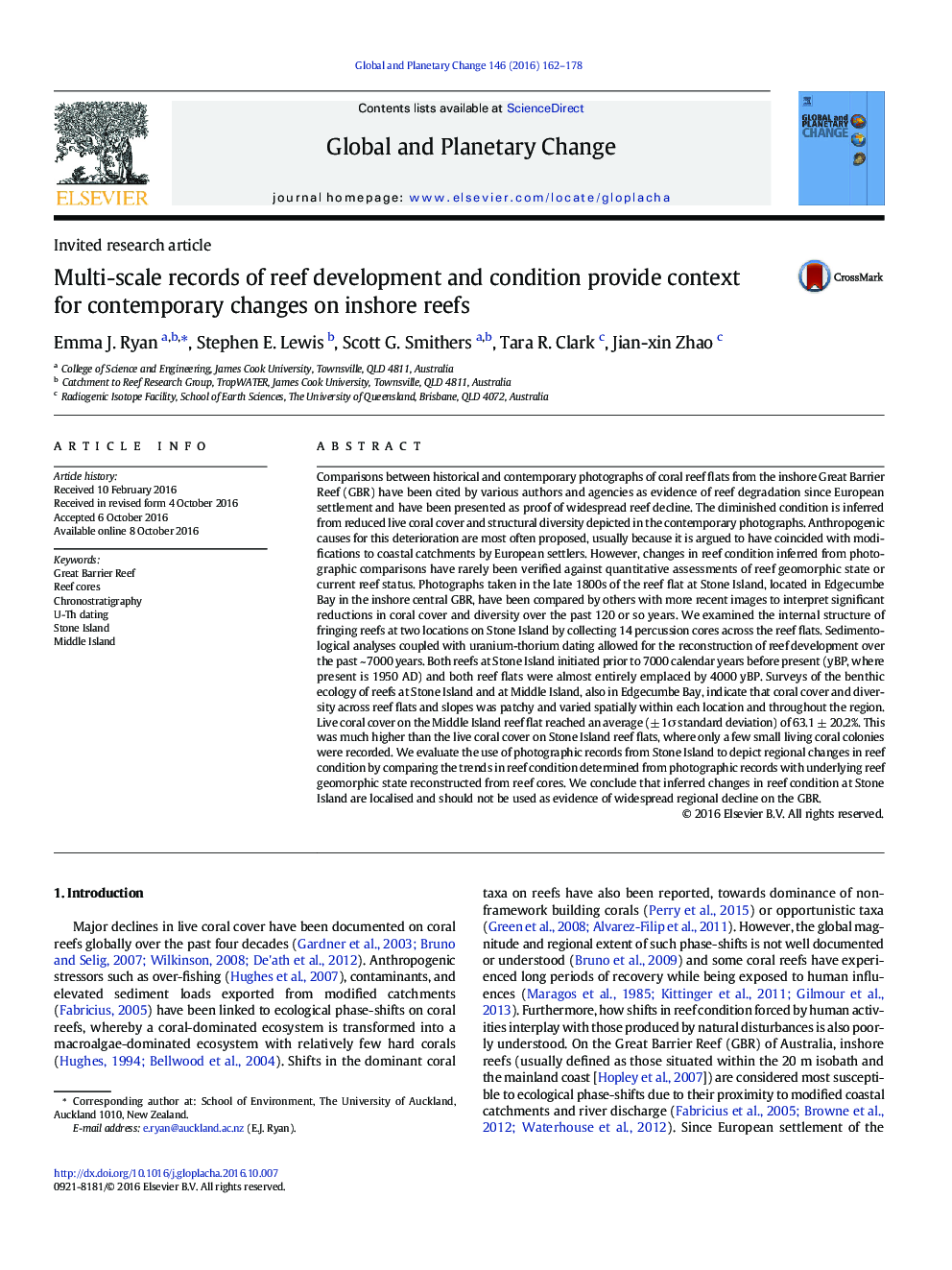| کد مقاله | کد نشریه | سال انتشار | مقاله انگلیسی | نسخه تمام متن |
|---|---|---|---|---|
| 6347886 | 1621636 | 2016 | 17 صفحه PDF | دانلود رایگان |
- The fringing reefs at Stone Island developed in the early- to mid-Holocene under higher sea level.
- The reef flats at Stone Island have not prograded significantly since 4000Â yBP.
- Reef flat live coral cover was extremely low at Stone Island (0%) and high at Middle Island (63 ± 20%).
- Inferred changes in reef condition at Stone Island are localised and not regionally evident.
- Elevation of the reef flat surface must be considered in photographic comparisons of coral cover.
Comparisons between historical and contemporary photographs of coral reef flats from the inshore Great Barrier Reef (GBR) have been cited by various authors and agencies as evidence of reef degradation since European settlement and have been presented as proof of widespread reef decline. The diminished condition is inferred from reduced live coral cover and structural diversity depicted in the contemporary photographs. Anthropogenic causes for this deterioration are most often proposed, usually because it is argued to have coincided with modifications to coastal catchments by European settlers. However, changes in reef condition inferred from photographic comparisons have rarely been verified against quantitative assessments of reef geomorphic state or current reef status. Photographs taken in the late 1800s of the reef flat at Stone Island, located in Edgecumbe Bay in the inshore central GBR, have been compared by others with more recent images to interpret significant reductions in coral cover and diversity over the past 120 or so years. We examined the internal structure of fringing reefs at two locations on Stone Island by collecting 14 percussion cores across the reef flats. Sedimentological analyses coupled with uranium-thorium dating allowed for the reconstruction of reef development over the past ~ 7000 years. Both reefs at Stone Island initiated prior to 7000 calendar years before present (yBP, where present is 1950 AD) and both reef flats were almost entirely emplaced by 4000 yBP. Surveys of the benthic ecology of reefs at Stone Island and at Middle Island, also in Edgecumbe Bay, indicate that coral cover and diversity across reef flats and slopes was patchy and varied spatially within each location and throughout the region. Live coral cover on the Middle Island reef flat reached an average (± 1Ï standard deviation) of 63.1 ± 20.2%. This was much higher than the live coral cover on Stone Island reef flats, where only a few small living coral colonies were recorded. We evaluate the use of photographic records from Stone Island to depict regional changes in reef condition by comparing the trends in reef condition determined from photographic records with underlying reef geomorphic state reconstructed from reef cores. We conclude that inferred changes in reef condition at Stone Island are localised and should not be used as evidence of widespread regional decline on the GBR.
Journal: Global and Planetary Change - Volume 146, November 2016, Pages 162-178
